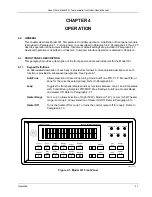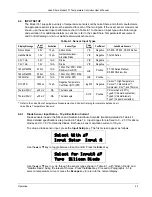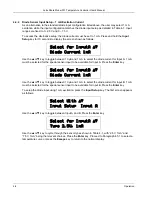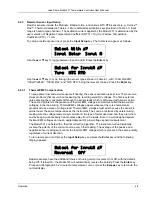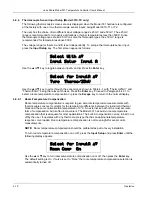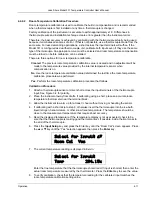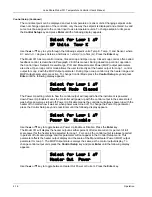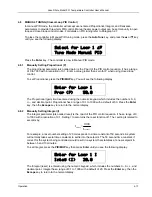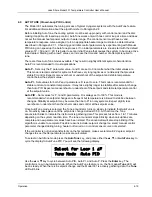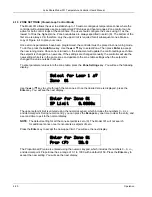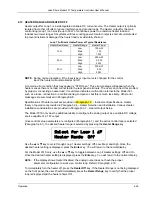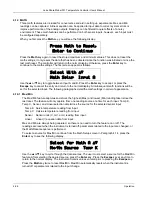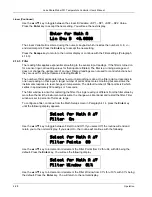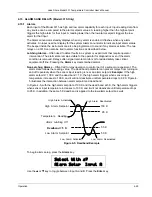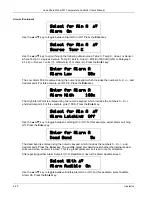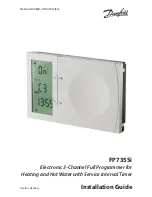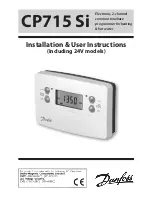
Lake Shore Model 331 Temperature Controller User’s Manual
4.6.2 Control
Modes
The Model 331 offers two control modes, closed loop and open loop. To select a control mode refer
to Paragraph 4.7.
Closed Loop Control:
Closed loop control, often called feedback control, is the control mode most
often associated with temperature controllers. In this mode the controller attempts to keep the load at
exactly the user entered setpoint temperature. To do this, it uses feedback from the control sensor to
calculate and actively adjust the control output or heater setting. The Model 331 uses a control
algorithm called PID that refers to the three terms used to tune the controller for each unique system.
Manual heater power output can also be used during closed loop control. Closed loop control is
available for both control loops and offers several methods of tuning.
Open Loop Control:
Open loop control is less complicated than closed loop control but is also less
powerful. Open loop control mode allows the user to directly set the manual heater power output for
Loop 1, control output for Loop 2, using only the Manual Heater Power (MHP) output parameter.
During Open Loop control only the heater range and MHP Output parameters are active, the setpoint,
control sensor and PID parameters are ignored. This type of control guarantees constant power to the
load but it does not actively control temperature. Any change in the characteristics of the load will
cause a change in temperature. Closed loop control is available for both loops and no tuning is
required.
4.6.3 Tuning
Modes
The Model 331 offers three tuning modes or ways to set the necessary P, I and D parameters for
closed loop control. MHP output is active during closed loop control and must be set to zero if not
wanted. Heater range must also be considered as part of tuning when using control Loop 1.
Manual PID Tuning:
Manual tuning is the most basic tuning method. The user manually enters
parameter values for P, I and D as well as heater range using their knowledge of the cooling system
and some trial and error. Refer to Paragraphs 2.7 and 4.8 for guidelines. Manual tuning can be used
in any situation within the control capabilities of the instrument.
AutoTune:
The Model 331 automates the tuning process with an AutoTune algorithm. This algorithm
measures system characteristics after a setpoint change and calculates P, I and D. The user must set
heater range. AutoTune will not work in every situation. Refer to Paragraphs 2.8 and 4.9 for details.
Zone Tuning:
Optimal control parameters values are often different at different temperatures within a
system. Once values have been chosen for each temperature range or zone, the zone feature can
automatically select the correct set each time the setpoint is changed. This mode does not help
choose control parameter values; it helps use the values more efficiently. Refer to Paragraphs 2.9
and 4.10 for details.
4.7 CONTROL
SETUP
After the Input Setup has been completed (Paragraph 4.4) and Loop is selected (Paragraph 4.6.1), the
user can begin to setup temperature control parameters.
Control input is the sensor input that is used for control feedback in closed loop control. Either Input A
or B can be assigned to either Loop 1 or 2. It is not recommended to assign both loops to one input.
Control input is ignored when using open loop control mode. To change control input, press the
Control
Setup
key and the following screen will appear.
Select for Loop 1 °®
Control with Input A
Use the
s
or
t
key to toggle between Input A or B. Press the
Enter
key to accept the setting and
continue with additional selections. You can press the
Escape
key anytime to exit the routine.
Operation
4-15

